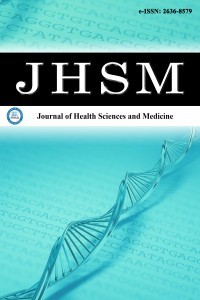1.
Boyko EJ, Magliano DJ. IDF Diabetes Atlas. 10th ed. InternationalDiabetes Federation; 2021.
2.
Mushtaq S, Khan K, Abid S, Umer A, Raza T. Frequency ofhypogonadism and erectile dysfunction in type-II diabeticpatients. Cureus. 2018;10(5):e2654.
3.
Kapoor D, Aldred H, Clark S, Channer KS, Jones TH. Clinicaland biochemical assessment of hypogonadism in men with type2 diabetes: correlations with bioavailable testosterone and visceraladiposity. Diabetes Care. 2007;30(4):911-917.
4.
Anupam B, Shivaprasad C, Vijaya S, Sridevi A, Aiswarya Y, NikhilK. Prevalence of hypogonadism in patients with type 2 diabetesmellitus among the Indian population. Diabetes Metab Syndr.2020;14(5):1299-1304.
5.
Al Hayek AA, Khader YS, Jafal S, Khawaja N, Robert AA, AjlouniK. Prevalence of low testosterone levels in men with type 2diabetes mellitus: a cross-sectional study. J Family CommunityMed. 2013;20(3):179-186.
6.
Bhasin S, Brito JP, Cunningham GR, et al. Testosterone therapy inmen with hypogonadism: an endocrine society clinical practiceguideline. J Clin Endocrinol Metab. 2018;103(5):1715-1744.
7.
Dandona P, Dhindsa S. Update: hypogonadotropic hypogonadismin type 2 diabetes and obesity. J Clin Endocrinol Metab.2011;96(9):2643-2651.
8.
Grossmann M. Low testosterone in men with type 2diabetes: significance and treatment. J Clin Endocrinol Metab.2011;96(8):2341-2353.
9.
Herrero A, Marcos M, Galindo P, Miralles JM, Corrales JJ.Clinical and biochemical correlates of male hypogonadism intype 2 diabetes. Andrology. 2018;6(1):58-63.
10.
Alberti KG, Zimmet PZ. Definition, diagnosis and classificationof diabetes mellitus and its complications. part 1: diagnosis andclassification of diabetes mellitus provisional report of a WHOconsultation. Diabetic Medicine. 1998;15(7):539-553
11.
The Expert Committee on the Diagnosis and classification of diabetesmellitus. report of the expert committee on the diagnosis andclassification of diabetes mellitus. Diabetes Care. 1999;22(1):5-19.
12.
Agarwal PK, Singh P, Chowdhury S, et al. A study to evaluatethe prevalence of hypogonadism in Indian males with Type-2diabetes mellitus. Indian J Endocrinol Metab. 2017;21(1):64-70.
13.
Costanzo PR, Knoblovits P. Male gonadal axis function in patientswith type 2 diabetes. Horm Mol Biol Clin Investig. 2016;26(2):129-134.
14.
Ugwu TE, Ikem RT, Kolawole BA, Ezeani IU. Clinicopathologicassessment of hypogonadism in men with type 2 diabetes mellitus.Indian J Endocr Metab. 2016;20(5):667-673.
15.
Corona G, Bianchini S, Sforza A, Vignozzi L, Maggi M.Hypogonadism as a possible link between metabolic diseases anderectile dysfunction in aging men. Hormones. 2015;14(4):569-578.
16.
Shi Z, Araujo AB, Martin S, O’Loughlin P, Wittert GA. Longitudinalchanges in testosterone over five years in community-dwellingmen. J Clin Endocrinol Metab. 2013;98(8):3289-3297.
17.
Camacho EM, Huhtaniemi IT, O’Neill TW, et al. Age-associatedchanges in hypothalamic-pituitary-testicular function in middle-aged and older men are modified by weight change and lifestylefactors: longitudinal results from the European Male AgeingStudy. Eur J Endocrinol. 2013;168(3):445-455.
18.
Harman SM, Metter EJ, Tobin JD, Pearson J, Blackman MR.Longitudinal effects of aging on serum total and free testosteronelevels in healthy men. Baltimore Longitudinal Study of Aging. JClin Endocrinol Metab. 2001;86(2):724-731.
19.
Song, S.H. and C.A. Hardisty, Early-onset Type 2 diabetesmellitus: an increasing phenomenon of elevated cardiovascularrisk. Exp Rev Cardiovasc Ther. 2008;6(3):315- 322.
20.
Zoungas S, Woodward M, Li Q, et al. ADVANCE Collaborativegroup. Impact of age, age at diagnosis and duration of diabetes onthe risk of macrovascular and microvascular complications anddeath in type 2 diabetes. Diabetologia. 2014;57(12):2465-2474.
21.
Nanayakkara N, Ranasinha S, Gadowski A, et al. Age, age atdiagnosis and diabetes duration are all associated with vascularcomplications in type 2 diabetes. J Diabetes Complications.2018;32(3):279-290.
22.
Dhindsa S, Prabhakar S, Sethi M, Bandyopadhyay A, ChaudhuriA, Dandona P. Frequent occurrence of hypogonadotropichypogonadism in type 2 diabetes. J Clin Endocrinol Metab. 2004;89(11):5462- 5468.
23.
Haghighatpanah M, Nejad ASM, Haghighatpanah M, Thunga G,Mallayasamy S. Factors that correlate with poor glycemic controlin type 2 diabetes mellitus patients with complications. OsongPublic Health Res Perspect. 2018;9(4):167-174.
24.
Khattab M, Khader YS, Al-Khawaldeh A, et al. Factors associatedwith poor glycemic control among patients with type 2 diabetes. JDiabetes Complications. 2010;24(2):84-89.
25.
Tomar R, Dhindsa S, Chaudhuri A, Mohanty P, Garg R, DandonaP. Contrasting testosterone concentrations in type 1 and type 2diabetes. Diabetes Care. 2006;29(5):1120 -1122.
26.
Dimopoulou C, Goulis DG, Corona G, Maggi M. Thecomplex association between metabolic syndrome and malehypogonadism. Metabolism. 2018;86:61-68. doi.org/10.1016/j.metabol.2018.03.024
27.
Shulman GI. Ectopic fat in insulin resistance, dyslipidemia, andcardiometabolic disease. N Engl J Med. 2014;371(12):1131-1141.
28.
Loves S, Ruinemans-Koerts J, de Boer H. Letrozole once aweek normalizes serum testosterone in obesity-related malehypogonadism. Eur J Endocrinol. 2008;158(5):741-747.
29.
Gautier A, Bonnet F, Dubois S, et al. Associations between visceraladipose tissue, inflammation and sex steroid concentrations inmen. Clin Endocrinol. 2013;78(3):373-378.
30.
Brüning JC, Gautam D, Burks DJ, et al. Role of brain insulinreceptor in control of body weight and reproduction. Science.2000;289(5487):2122-2125.
31.
Wittert G, Grossmann M. Obesity, type 2 diabetes, and testosteronein ageing men. Rev Endocr Metab Disord. 2022;23(6):1233-1242.
32.
Langer C, Gansz B, Goepfert C, et al. Testosterone up-regulatesscavenger receptor BI and stimulates cholesterol efflux frommacrophages. Biochem Biophys Res Commun. 2002;296(5):1051-1057.
33.
Hernández-Mijares A, García-Malpartida K, Solá-Izquierdo E,et al. Testosterone levels in males with type 2 diabetes and theirrelationship with cardiovascular risk factors and cardiovasculardisease. J Sex Med. 2010;7(5):1954-1964.
34.
Cameron MA, Maalouf NM, Adams-Huet B, Moe OW, SakhaeeK. Urine composition in type 2 diabetes: predisposition to uricacid nephrolithiasis. J Am Soc Nephrol. 2006;17(5):1422-1428.
35.
Zong J, Sun Y, Zhang Y, et al. Correlation between serum uricacid level and central body fat distribution in patients with type2 diabetes. Diabetes Metab Syndr Obes. 2020;13:2521-2531. doi:10.2147/DMSO.S260891
36.
Hussain A, Latiwesh OB, Ali F, Younis MYG, Alammari JA.Effects of body mass index, glycemic control, and hypoglycemicdrugs on serum uric acid levels in type 2 diabetic patients. Cureus.2018;10(8):e3158.

